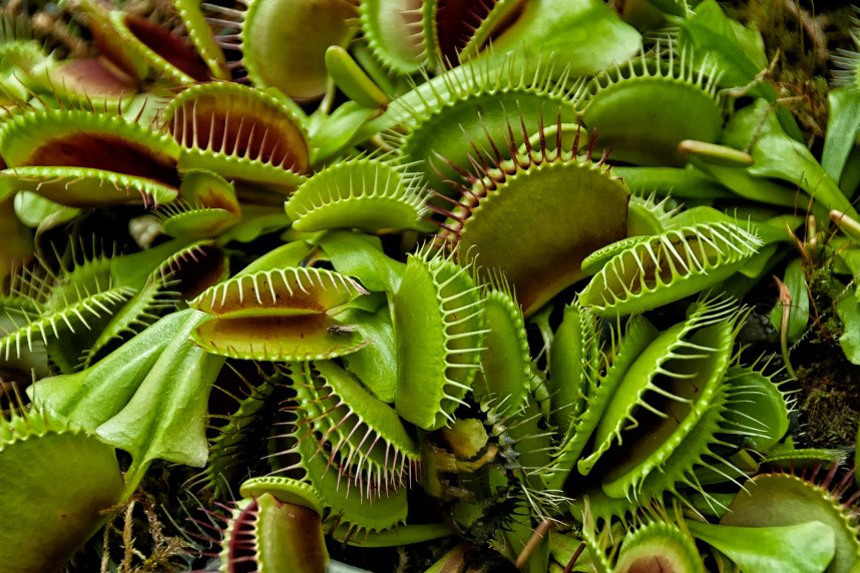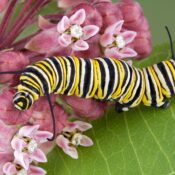The idea that plants benefit from kind words, or speech in general, has roots that go back at least to Charles Darwin, who supported the concept. Sound evidence that speaking to plants makes them healthier came to light several years ago – it turns out the “silly” folks who talk to plants have been right all along. And this effect is not due to the carbon dioxide we exhale, which plants need, since audio recordings produce the same result. Sounds can increase plant growth and crop yields, improve immunity, increase drought tolerance, and boost photosynthesis.
The perks of jabbering to our plants go both ways: we also profit from it. Research has shown talking to plants helps alleviate symptoms of anxiety and depression as an adjunct to other treatments. Some doctors in the UK give plants to their patients for them to talk to at home. Patients still need therapy – one-way conversations only go so far. And yet, our plants are talking to us.
Right now, we’ve no clue if listening to plants is just as good for us as talking to them is. That’s because until a few months ago, we didn’t realize they communicate audibly. They’re not chatty all the time; happy plants tend to chill quietly. The grumpy ones make a racket, yelling about whatever has them bent out of shape at the moment.
A study published in the journal Cell in March 2023 reveals that plants emit clicking or popping noises in response to stressors, which can include insect feeding, drought, and human actions. If you’ve never heard your plant snap, crackle, pop, or otherwise try to get your attention, join the club. Plants “talk” in a frequency too high for our ears to sense, but the right equipment can detect it. The team used an ultrasound microphone, along with a special program that converted high-frequency plant “conversations” into something they could hear.
Though we perceive plants as mute, they’re pretty loud with their buddies. According to the research team, average click volume tended to be 60 decibels or so, the same as a normal human conversation. Under acute stress, plants clicked at roughly 70 decibels, equal to a dishwasher running three feet away.
The team thinks the ability to make sound in reaction to harsh events may be universal in plants, as all species in their study did so. The sounds might serve to warn fellow plants of threats, but researchers can’t test this hypothesis until more studies are done. Or until Google Translate adds “plant” to its drop-down language menu.
Researchers explain how plants make sounds when stressed (Uploaded to YouTube by The Independent)
Even without an interpreter, the scientists were able to note unique “dialects” among species. All plants click when stressed, but patterns and timing vary by species. A grape vine doesn’t sound the same as a cactus does. Wheat and corn, while closely related, differ slightly, too. And tobacco and tomato plants clicked louder than the rest of the species examined. Another observation is that plants alter their click patterns based on the type of stress, such as when a bug bites a leaf or a technician snips a stem.
The one case when plants do sound alike is if they’re thirsty. A well-hydrated, blissful plant barely makes a peep – one click per hour at most. As soil moisture drops below par, plants begin clicking before we see outward signs of dehydration. When the plant starts to wilt, clicks become louder and the tempo picks up, maxing out near 40 per hour. The pace again slows as foliage droops, eventually stopping when the plant has entirely wilted.
With all due respect to the scientists who performed the study, using gadgets to unlock plant communication is old news. In 1949, Roald Dahl published a short story called “The Sound Machine,” where a guy invents a device that allows him to eavesdrop on plants. He hears a rose issue “a frightful, throatless shriek” as it gets snipped. He also finds that a daisy squeals if plucked, and a beech tree lets out a massive, guttural sob when cut with an ax.
The most extreme screams belong to magical mandrake plants featured in Harry Potter and the Chamber of Secrets. When uprooted, they shriek so horribly, the sound can be lethal.
Thinking that plants yell when they’re hurt is not limited to fiction. After all, the study team say they have no idea how plants make noise, let alone why. Screaming hasn’t been ruled out.
The late Barbara McClintock, American cytogeneticist and Nobel laureate, told her biographer she feels bad when she walks on grass, because she knows it’s screaming at her. It’s worth noting that when McClintock’s work on “jumping genes” appeared in 1950, she was branded a crackpot. Thirty-three years later, it earned her the Nobel Prize. Maybe time will reveal she was ahead of the curve about grass, too.
We’re not yet to the point where you can make small-talk with your office plant, but who knows – maybe someday. In the meantime, don’t forget to water the thing; if a plant-chat phone App ever comes out, it might just start yelling at you.
Become a Saturday Evening Post member and enjoy unlimited access. Subscribe now




Comments
These “Our Better Nature” articles are fascinating! The touch of humor always engaging. Thanks Paul Hetzler. Please keep them coming!